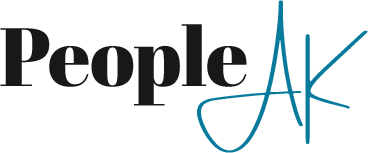For leaders in business, it is no surprise that having the right person doing the right job is crucial for business performance and maintaining a competitive edge. The right hire can enhance management practices or adversely complicate them with an employee who may not be the right fit.
Even with today’s perceived talent shortage, employers seem to be taking caution with new hires, often
leaning on relationships and instinct. However, Gallup meta-analysis results reveal that when companies select the top 20% of candidates based on a scientific Gallup assessment, they frequently realize: 41% less absenteeism, 70% fewer safety incidents, 59% less turnover, 10% higher customer metrics, 17% higher productivity and 21% higher profitability.
With the rapid changes in workforce demographics, organizations are experiencing a high rate of turnover and lower retention. According to AEDC, the recruitment of talent is the number one concern of employers. Due to a rapidly developing business environment and advancing technology, outsourcing recruitment and hiring is becoming commonplace.
Today only 28% of business leaders are considering internal promotions and lateral movement. Outside hiring has been adopted as a standard practice due to less internal development and the immediate needs to fill positions. Business leaders are doing their best to tread waters to fill vacant positions as soon as possible and maintain the required productivity by having current staff cover vacancies; often to the detriment of morale and engagement. With such efforts, the hiring process becomes more complicated and exponentially more expensive without organizations realizing the real cost of recruitment. Having employees do more with less leads to lowered production, efficiency and customer service, which results in reduced revenues not recorded as an actual recruitment expense.
Bigger picture, this leads to a tightening of the labor market while inhibiting fresh talent at the entry level positions. When firms limit internal potential for advancing lower-level entry positions, the organization is not opening doors for new talent and in some cases stagnates the succession planning process (HBR, 2019). When there is not a future vision for an employee’s professional growth and development, organizations see that the most valuable employees are hired away and the ones remaining become significantly disengaged.
Directly following the initial advertisement and the extension of job interviews, the more influential recruitment efforts extend into orientation and onboarding. The development and onboarding of new hires demands an investment from leadership and the organization to retain new talent. Consistency and purpose are key elements needed to retain the highest producing and qualified candidates. Given the challenges in recruiting talent, retention should be the focus, and yes, retention begins with onboarding.
According to Gallup, only 12% of employees strongly agree that their organization does a great job onboarding new employees. This failure gets in the way of the formation of an emotional bond between the new hire and the company — a connection that can make or break retention. From an employee perspective, onboarding involves a series of firsts: first day on the job, first time meeting a manager and coworkers, first work projects and tasks, and first opportunities to share their talents with the organization. Understanding employees’ talents and strengths is key to establishing opportunities for great firsts.
Gallup continues with recommending that the transition from candidate to employee should feel like a natural handoff that continues the momentum and fuels the excitement for the new job. A thoughtful onboarding program will connect talent to employer and result in loyalty.
Written By Katie Lauwers
Understanding your strengths unlocks your potential and leads you to greater performance. To learn more about our Clifton Strengths Assessment training, contact our Certified Strengths coach Katie at 907-276-5707 and schedule a FREE consultation today!

